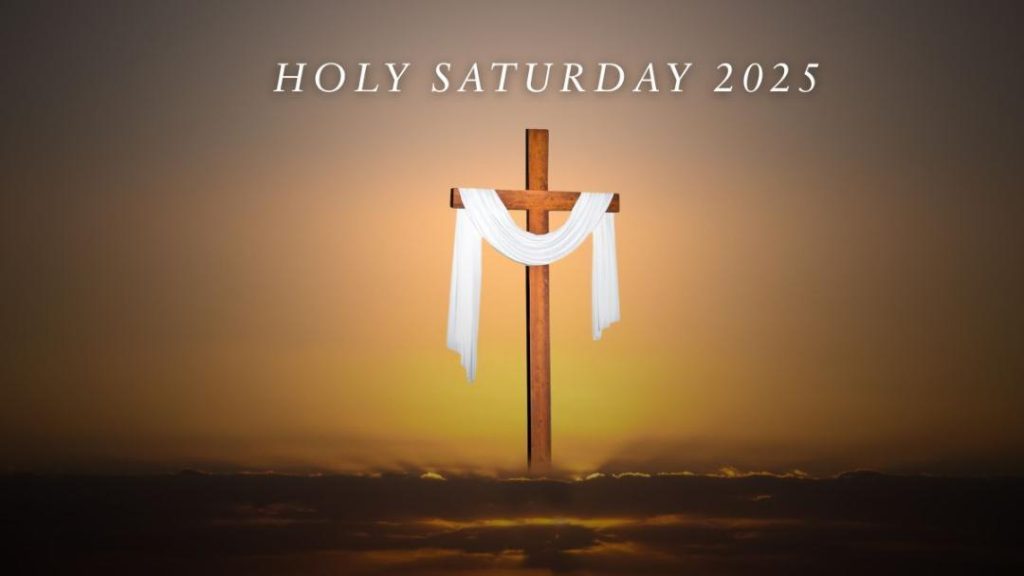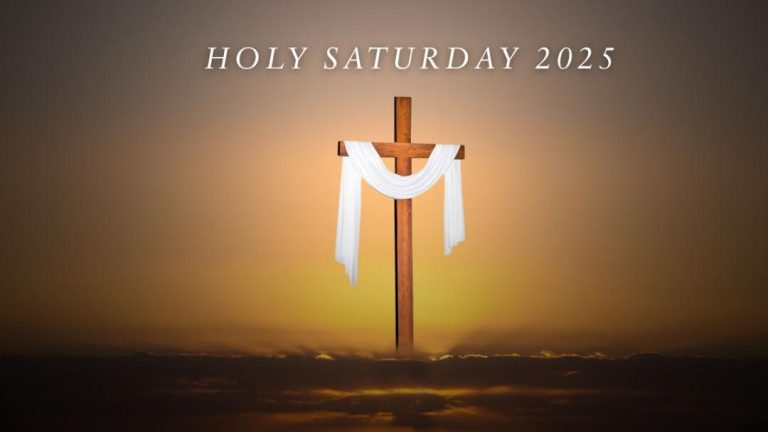
What is Holy Saturday & why is it celebrated?
The Christian calendar is marked by several significant events, and one of them is Holy Saturday, also known as Easter Saturday or Black Saturday. It is observed between Good Friday and Easter Sunday, which marks the day Jesus Christ lay in the tomb after his crucifixion. This year, Holy Saturday will be observed on April 19, 2025, followed by Easter Sunday on April 20.
Holy Saturday is a day of silence, reflection, and anticipation, preceding the celebration of Jesus’ resurrection on Easter Sunday. It is a time for Christians to meditate on the significance of Christ’s sacrifice and the promise of eternal life that follows. In this blog post, we will delve into the history, significance, and traditions associated with Holy Saturday.
History of Holy Saturday
The concept of Holy Saturday dates back to the early Christian era. According to the New Testament, Jesus Christ was crucified on the cross on Good Friday, and his body was placed in a tomb for burial. The tomb was sealed with a large stone, and Roman soldiers were stationed to guard it. On the third day, Jesus rose from the dead, demonstrating his power over death and sin.
The period between Jesus’ burial and resurrection is referred to as Holy Saturday. It is a time of intense silence, reflecting the stillness and darkness of the tomb. The faithful observe this day as a time of contemplation, prayer, and reflection, awaiting the joy and celebration of Easter Sunday.
Significance of Holy Saturday
Holy Saturday holds great significance in the Christian faith, as it marks the culmination of Jesus’ sacrifice. The day represents a time of darkness, despair, and uncertainty, mirroring the emotions of those who mourned Jesus’ death. However, it also symbolizes the promise of redemption and the hope of eternal life.
The significance of Holy Saturday can be understood through three key aspects:
- Silence and Reflection: The day is marked by silence, reflecting the stillness of the tomb. It is a time for Christians to reflect on the significance of Jesus’ sacrifice and the promise of eternal life.
- Anticipation: Holy Saturday is a day of anticipation, as Christians look forward to the celebration of Jesus’ resurrection on Easter Sunday.
- Hope and Redemption: The day represents the hope and redemption that Jesus brings to humanity through his sacrifice and resurrection.
Traditions and Customs
Holy Saturday is observed differently in various Christian denominations and cultures. However, some common traditions and customs include:
- Veneration of the Cross: Many churches hold special services on Holy Saturday, where the veneration of the cross is a significant part of the ritual.
- Tenebrae: Tenebrae is a special liturgy held on Holy Saturday, which involves a gradual extinguishing of candles, symbolizing the darkness and despair of the tomb.
- Preparation for Easter Sunday: Holy Saturday is often marked by special preparations for Easter Sunday, including decorating eggs, baking traditional Easter treats, and preparing family gatherings.
- Midnight Mass: In some traditions, a midnight mass is held on Holy Saturday, which marks the beginning of Easter Sunday.
Conclusion
Holy Saturday is a significant day in the Christian calendar, marking the period between Jesus’ crucifixion and resurrection. It is a day of silence, reflection, and anticipation, preceding the celebration of Jesus’ resurrection on Easter Sunday. As Christians around the world observe Holy Saturday, they reflect on the significance of Jesus’ sacrifice and the promise of eternal life that follows. Whether through veneration of the cross, tenebrae, or special preparations for Easter Sunday, Holy Saturday is a day of hope and redemption, reminding us of the power of Jesus’ love and sacrifice.





